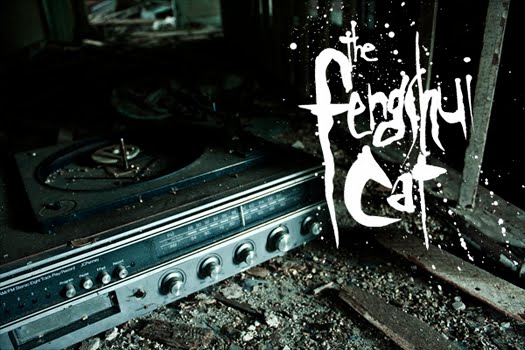Starring Charlie Sheen, Michael Biehn, Joanne Whalley-Kilmer, Dennis Haysbert, Rick Rossovich, Cyril O’Reilly, Bill Paxton
Directed by Lewis Teague
Written by Chuck Pfarrer, Gary Goldman
Produced by Brenda Feigen, Bernie Williams
113 minutes
2.5 stars
I would have liked this movie fifteen years ago, back when I was going through my pre-adolescent military phase, and a bunch of guys blowing up some other guys with (then) state-of-the-art weaponry was all I needed. Navy SEALS isn’t a straight-to-DVD, patriotic glorification of advanced warfare, heavily endorsed by the US Navy—but it’s damn close. If it isn’t the kind of movie that was made to get a surge of young guys to sign up with their local recruiter, I don’t know what is.
The film boasts such star power as Charlie Sheen and Michael Beihn in a Tom Clancy-type plot, but one which is more in line with the Clancy-label videogame franchise than any of his novels. The tone is decidedly more Top Gun than—well, really anything else. You won’t appreciate this film if you’re expecting any sort of commentary.
The premise is simple. We see both “sides” of the lives of the men on a rough-and-tumble Navy SEALs team: one side when they’re on mission, the other when they’re off, with a few highlighted dramatic subplots interspersed between. The various attempts at endearing us to the characters are painfully obvious, first-date awkward. It’s basically Top Gun all over again, without the planes, and with Charlie Sheen standing in for Tom Cruise.
As hard as these guys work, they play even harder. We’re meant to assume that the experience of bullets flying past your head on a regular basis is automatically coupled with the mentality of being a larger-than-life, gung-ho risk-taker—the kind of action junkie whose night of shots isn’t complete until the bar is actually on fire, and for whom the instance of a towed car inspires hairbrained stunts of legend, involving a bicycle chase down the freeway, a Fast and the Furious-style hijacking while in-transit, and Jason Statham-brand maneuvers to escape oncoming traffic while driving in reverse. Yes, we understand that they’re supposed to fit the “badass tactical unit on-the-clock/rowdy-but-loveable gang of guys off-the-clock” stereotype, but a scene in which they tear up a golf course, consequence-free, starts to border on the absurd.
In the foreground of this merry band of hotshot supermen, are Hawkins (Sheen), Curran (Beihn), and Graham (Dennis Haysbert). As an added bonus, Bill Paxton plays a sniper they all lovingly refer to, while on mission, as “God.”
Hawkins is the wild, untamed one, with a simple need: a need for speed. Duh. He’s politically incorrect, he improvises, flies by the seat of his pants; a showy, hot-headed maverick. To help further illustrate this, he drives a red convertible. His “dramatic arc” is foreshadowed early on as a sort of need to seek a balance to his action high, to learn how to disconnect from his adrenaline rushes.
Curran is the leader, and thus the careful, rigorous strategist of the team, always the professional. He’s all about functionality and protocol; his mind never far from the job. To help you better understand his character, he drives a black, all-purpose Jeep. His dramatic arc is sort of a “struggle with the burden of command” type of thing.
Graham, at the beginning of the film, is about to get married. Unfortunately, just before the ceremony commences, everybody’s pager on the groom’s side starts to go off. This signals a drop-everything-at-a-moment’s-notice, priority-one mission call, and the bride is left hanging. Graham is skirting two worlds, that of the job, and that of the responsibility that comes with being a married man. He will have to choose one or the other—where to place his commitment—before the end of the movie, or before he dies, whichever comes first. Naturally, he’s more conservative and mature than the others.
While on the opening mission, which is supposed to be an open-and-close extraction of a captured American aircrew, Hawkins and Graham stumble upon a cache of Stinger missiles which could prove disastrous if allowed to remain in the possession of the terrorists. Unfortunately, Hawkins fails in his initial attempt to destroy the missiles, and Curran orders the entire team out before he can get another chance. This lapse in judgment precipitates the rest of the plot, as now the SEALs have to track down the missiles across the globe.
Very early on, the film sets up the rule that Intel is key—the team’s general badassery in the field is totally reliant upon good Intel, and rendered utterly useless without it. To this end, the team develops an information-based relationship with a Lebanese journalist played by Joanne Whalley-Kilmer, who drives a wedge between Curran and Hawkins when the two develop a mutual attraction to her.
What starts out as a brotherly, competitive relationship between the two naturally turns into a bitter resentment, further compounded by Hawkins’ sheer idiocy at certain points. Unfortunately what might have made for an interesting dramatic rivalry, never goes to the depths I wanted it to, the tension not thick enough; the conflict not deep enough to warrant more than a passing reflection. Unwilling or unable to push the drama further, and the script to new levels by exploring unfamiliar territory, the writers, Chuck Pfarrer (himself a retired SEAL commander) and Gary Goldman too often elect to “play it safe.” By this I mean they’re too afraid to make any lasting ruptures to the framework they’ve established in the opening acts, and tend to get out of a scene before the conflict threatens to go anywhere interesting. The action while on missions is highlighted; the team’s “time off” serves only as filler—it should be the other way around. Each time I thought a scene was going to cover new ground, the characters were plunged into another mission that put development on hold, and made it seem like everything was fine again between them, all rifts magically repaired. It’s almost as if all the “mission” scenes were written in order, by a giddy 12-year-old, and then all the “off-mission” scenes were written, by the same kid, now grown-up. The first collection is just a series of action scenes, by someone who thinks what they’ve created is a story, and the second collection of scenes is a story, but one that yet lacks maturity and experience.
And so, what you have in Navy SEALS is the start of an inquiry into the fragility of a friendship that is never really resolved. In a more interesting movie, we might have seen Curran pass his sights over Hawkins, and linger over him, the distinction between him and the enemy blurred for a delicate moment. Graham’s wife might have actually threatened to walk out on him if he didn’t make a choice one way or the other—the scenes between them, as they currently stand, are conflict-less, and essentially pointless.
While there are some memorable scenes, Navy SEALS is ultimately a hunk of clay that could have been a nice vase but which somebody decided to just make into a kitschy paperweight.































